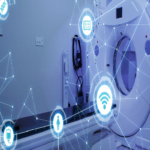Building a Healthcare IT Company to $100 Million: Dr. Rob Langdon, Co-Founder of T-System
A technology company that first built a $30 million business selling a paper product? You got to be kidding! No, I am not. Read T-System’s story doing just that!
Sramana Mitra: Rob, let’s start with the beginning of your personal journey. Where are you from? Where did you grow up and in what kind of background?
Rob Langdon: I was born and raised in Canada. I’m still Canadian although I’m a US resident. I initially attended Engineering School – Electrical Engineering – after being fascinated my whole life with technology, electronics, and music. During the course of my studies, I was somewhat disillusioned with Electrical Engineering – that was in the 70s – because Electrical Engineering at that time did not really reach the digital age. Most of what we did, at least in my province in Canada, was develop power plants and 90% of engineers ended up working in hydro-electric power. Our computer systems were very rudimentary.
Then, I switched to Medicine. I thought that would be something that would be more interesting in the sense that it would combine science and human interaction. In the course of that, I discovered a new way to be excited with my career. That was the adventure of Emergency Medicine. I went to Emergency Medicine because they offered day-to-day excitement. I became an ER doctor. There wasn’t a single day that I came home bored.
Sramana Mitra: This is all happening in Canada?
Rob Langdon: Yes, in Canada. After a year of emergency medicine, I moved out to the US. Texas seemed to be the land of opportunities. They needed many physicians. I walked into this emergency department in Texas. In comparison, there were many different backgrounds. There was high acuity trauma. It was quite exciting. I practiced Medicine in the ER for 15 years. I really enjoyed it.
We had problems that all ER doctors faced – the problems of tremendously increasing volumes of patients in unscheduled care and increasing law suits against my colleagues and myself by very aggressive attorneys for medical malpractice. We were faced with increasing regulation especially with the way we document life and death activity. You would think the most stressful activity is taking care of the patients. Often, it’s when you’re charting. It determines how you get paid, whether you can defend yourself in court, or whether you’re going to be attacked by a federal regulator.
My colleague, the co-founder of the company who’s from Texas, and I started looking for that specific step in the workflow of an emergency physician. When we looked at it, we realized that doctors spend maybe 30% to 40% of their time documenting information. We came up with a very simple but extremely effective solution that was quite different from what was being proposed and marketed. That was a set of paper template that would wrap up all of the problems. The system initially consisted of 65 complaint specific templates.
In a very eloquent way, it displayed the information that the doctor needed to chart each patient to help them solve the problem. It helped the physician comply with regulations. It helped the doctor receive reimbursement they were entitled to, and protect them legally; yet made them faster. They were able to spend more time with the patient. They were able to go the bedside and sit down with the patient with a simple piece of paper and spend an extra 30 seconds to a minute with the patient. It had multiple benefits. Doctors would also generally improve their reimbursement.
Sramana Mitra: You built this as a startup company?
Rob Langdon: Yes, we started out of our garage.
Sramana Mitra: What year are we talking about?
Rob Langdon: 1995.
Sramana Mitra: Who developed the product?
Rob Langdon: Woodrow Gandy and I developed it and spent hours and hours per day developing it. We drove our families and wives crazy because we were obsessed with this.
Sramana Mitra: Obviously, this is from your own experience as an ER doctor that you were designing the solution?
Rob Langdon: Yes, there’s one other aspect to this. Initially, we thought the solution would be a computer software product. There was over 100 software documentation products that had been developed and marketed. We thought we would do the same thing – develop a software program. What we said was, “We’ve to do it on paper first in real time.” The templates were initially a design step for a later software product. As we started using these paper templates, we realized that these things solved the problems beautifully. They can be used as a medical-legal record. They can be used by the billing company. They are extremely efficient. This very simple thing was tangent to our original idea.
Sramana Mitra: You basically generated forms that doctors were filling up and then using them as documentation for filing purposes?
Rob Langdon: Yes, it was accepted by the insurance companies and medical records.
Sramana Mitra: It was a paper-form product you went to market with?
Rob Langdon: Yes. We tried it out in a couple of local hospitals. That was the key point. We were able to implement it at our own hospital. The real question is, “Will it really work outside of your own private area? Can you go to another hospital as a test case?” That was a key test of the product to really go to an outside hospital where we didn’t practice and where we weren’t part of the leadership group. Our first pilot site was a big success.
Sramana Mitra: How much did the first hospital pay you for?
Rob Langdon: The first hospital paid us $60,000 a year. We tried to charge a lump-sum base equal to what the value of the product would be in 5 years up front. They would save dictation cost, which ranges anywhere from $100,000 to $750,000.
Sramana Mitra: What did that entail? You provided the forms and then would you digitize the forms?
Rob Langdon: No, we just license the use of the copy of the forms.




































